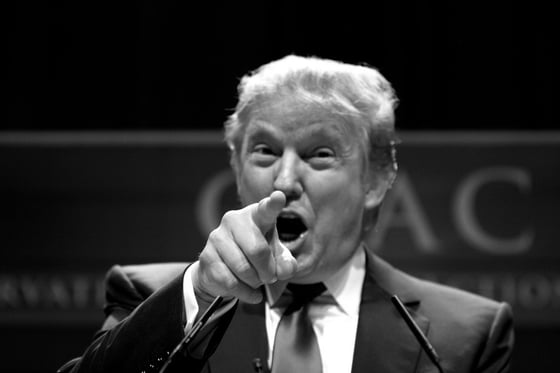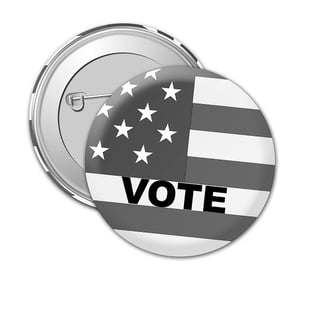


This isn't fake news: A biddable media campaign won Trump the election




If you want to achieve any marketing aim then biddable is a great way to boost our activity however, biddable is difficult to get right. If you want to get some solid advice on how to do it right, then read our blog on “Biddable media can accelerate any inbound marketing campaign”
People seem flummoxed by Trump getting into the White House, and yeah it’s a bit mental. Are (just under) half of the US population closet climate-change-denying, racist misogynists? And what is biddable media doing to influence modern day politics? Read on to find out…
If you want to achieve any marketing aim, then biddable media is a great way to boost activity. However, biddable is difficult to get right. If you want to get some solid advice on perfecting your campaign, read our blog 'What is biddable media, and how can it catapult your growth?'
How can biddable media influence national politics?
In simple terms, we all have reasons, beliefs and fears which dictate how we vote (if we vote at all). During the US election race, these factors were played on and exacerbated by fake news and data targeting on a previously unimagined scale.
This blog isn’t a conspiracy theory. In fact, the Trump campaign was very open and almost boastful about how they used this strategy:
“We have three major voter suppression operations underway,” a senior Trump official explained to reporters from BusinessWeek.
Regardless of how you feel about the politics, one big lesson to take from the US election is the power of biddable media to amplify a message an influence the public. I would go so far as to say that Trump won the election using a perfectly tailored content and biddable media strategy.
Now, you may think I’m talking nonsense. However, if you read further we will look at how the campaign used content and biddable media to raise donations, suppress votes in key areas and ultimately hand Trump the White House.
Moreover, we will examine how these techniques can be implemented on a smaller scale to generate success for your inbound marketing campaigns.
Raising donations
In the early days of Trump’s campaign, a marketing team was given a small budget to expand Trump’s base of supporters. They made a calculated decision to invest all the money on Facebook advertising and launched Trump’s first biddable media campaign.
They uploaded the names, email addresses and phone numbers of known Trump supporters and created custom audiences. They then created lookalike audiences across location, age and gender demographics, just like we do with our persona creation strategy.
Then they created over 100,000 unique pieces of content, optimised the design and messaging used in Trump’s Facebook ads, and put $2 million dollars in Facebook ad spend. This fired out the ads to everyone in their chosen target group.
Describing one such test, Wall Street Journal reporter Christopher Mims wrote: “One day in August, his campaign sprayed ads at Facebook users that led to 100,000 different webpages, each micro-targeted at a different segment of voters.”
This biddable media process contributed to the creation of filter bubbles, a topic we covered at length in this previous blog post.
Living in a biddable media bubble
A filter bubble is the phenomenon where news algorithms only send you articles you will engage with. This narrows the range of information you are sent and polarises the information you see. It has a powerful effect on people’s actions, thoughts and feelings, and can be used to influence actions on a micro level.
This tactic was initially used to find like-minded people who would donate to Trump’s campaign. Trump’s biddable media strategy used tailored content mixed with phenomenal targeting to get people to literally give away money, and it worked, with over $275 million coming from Facebook donations. To put that into perspective, that’s an ROI of 13750%. This figure gives a little bit of credence to Trump’s boasts about business acumen.

Voter Suppression
Nobody can call into question a politician for attempting to raise money. However, there was a more sinister strategy also employed to great effect using biddable media.
Using the same method as before to create a large and detailed data set, the Trump campaign implemented a content plan aimed specifically at three groups. Namely, idealistic white liberals, young women, and African Americans.
They then created a South Park-style animation of Hillary Clinton delivering the “super predator” line, using the original 1996 sound bite, as cartoon text popped up around her:
“Hillary thinks African Americans are super predators.”
Using the Facebook advertising platform, Trump’s animated “super predator” political advertisement was targeted to certain African American voters. This was done using Facebook non-public posts, whose viewership the campaign controlled. As a result, as Parscale put it, “only the people we want to see it, see it.”
The goal was to depress Hillary Clinton’s vote total. Again, this is not a conspiracy theory, but a fully public fact. “We know because we’ve modelled this,” the senior Trump official told BusinessWeek. “It will dramatically affect her ability to turn these people out.”
On election day, Democratic turnout in battleground states was surprisingly weak. This was especially among these three demographic groups, all of whom contributed to the razor-thin margins that lost Clinton those states. In Ohio for example, turnout in majority African-American precincts was down 11% from four years ago.
In summary, Trump’s biddable media campaign was a major success on both fronts. To paraphrase Joel Winston:
“Trump’s presidential election victory is the most successful digital campaign operation in American history. The secret weapons in Trump’s digital arsenal were his database of 220 million people and the Facebook advertising platform.”
What can we learn about biddable media?
Trump’s campaign method was not voodoo. It was a well-thought out and executed commercial campaign, just like those that have been carried out by marketing agencies for years. The difference was the amplification of content using biddable media.
The campaign followed a three-step process:
- Create a profile of the ideal consumer and data match them.
- Generate content that resonates with them.
- Target your consumer and amplify messages with biddable media.
We know this process well, as we use it daily for our client accounts. What is amazing about the Trump campaign was its scale and accuracy. We have generated some impressive results using this method, but nothing on a comparable scale to the Trump campaign. Regardless of your political leanings, I think we can all appreciate how powerful the biddable media process can be.
If you want to achieve any marketing aim, then biddable media is a great way to boost activity. However, biddable is difficult to get right. If you want to get some solid advice on perfecting your campaign, read our blog 'What is biddable media, and how can it catapult your growth?'








